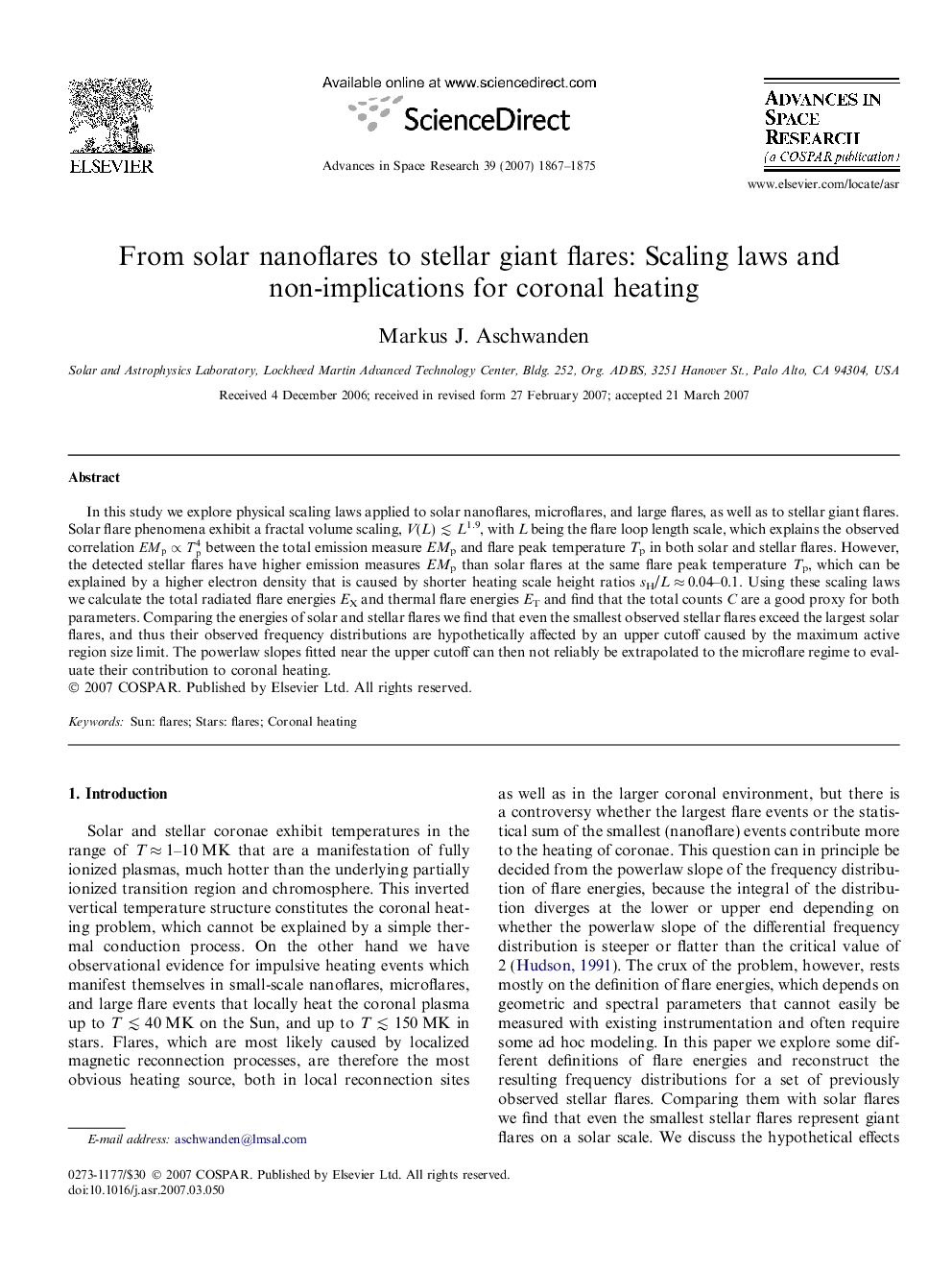| Article ID | Journal | Published Year | Pages | File Type |
|---|---|---|---|---|
| 1768792 | Advances in Space Research | 2007 | 9 Pages |
In this study we explore physical scaling laws applied to solar nanoflares, microflares, and large flares, as well as to stellar giant flares. Solar flare phenomena exhibit a fractal volume scaling, V(L) ≲ L1.9, with L being the flare loop length scale, which explains the observed correlation EMp∝Tp4 between the total emission measure EMp and flare peak temperature Tp in both solar and stellar flares. However, the detected stellar flares have higher emission measures EMp than solar flares at the same flare peak temperature Tp, which can be explained by a higher electron density that is caused by shorter heating scale height ratios sH/L ≈ 0.04–0.1. Using these scaling laws we calculate the total radiated flare energies EX and thermal flare energies ET and find that the total counts C are a good proxy for both parameters. Comparing the energies of solar and stellar flares we find that even the smallest observed stellar flares exceed the largest solar flares, and thus their observed frequency distributions are hypothetically affected by an upper cutoff caused by the maximum active region size limit. The powerlaw slopes fitted near the upper cutoff can then not reliably be extrapolated to the microflare regime to evaluate their contribution to coronal heating.
